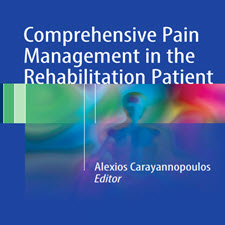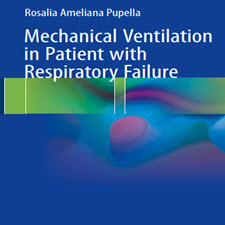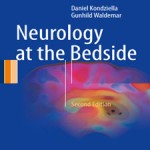Comprehensive Pain Management in the Rehabilitation Patient
ABSTRACT
Pain research witnessed a paradigm shift at the turn of the century. Emerging data showed that long-lasting pain correlates with functional and structural changes that constituted putative markers of neuropathology in the brain. Accordingly, strong views were expressed in favor of labeling chronic pain as a disease entity . Changes at the level of the brain-fueled speculations that chronic pain is a neurological disease with biological, or more accurately, neurophysiological underpinnings. Struggling to distinguish the homeostatic from the pathological, some cautioned against expanding this notion and creating confusion regarding “good” pain versus “bad” pain . Regardless of phenomenological or epistemological arguments, we here extend this conversation with the pragmatic goal of identifying novel, objective pain diagnostics. We follow the basic premise that pain in general, and chronic pain in particular, alter neuronal function in the brain; our goal is to capture this change in neuronal activity and to use it as an objective neuronal signature of pain.
INTRODUCTION
If we accept the notion that chronic pain is a disease, it follows that chronic pain is a clinical condition that requires a unique set of therapeutic and diagnostic protocols. As other authors in this book will evidently make the case that rehabilitation patients with acute to chronic pain face limited therapeutic options, we here discuss the diagnostic part of the equation, which has received relatively little attention in the literature. The gold standard for pain diagnosis in the clinical setting remains subjective and unreliable in all patient populations, especially non-communicative patients, which are often found within the rehabilitation care continuum. Objective, cost-effective, and hassle-free measurement of pain is not only important for reaching an accurate diagnosis, but it is also critical for informing optimal treatment protocols and for maximizing function. Hence, accurate diagnosis contributes to effective pain management, reduces the risk of side- effects, and conserves tremendous resources on the part of the patient and caregiver. Of the many challenges in managing patients with chronic pain, one of the greatest is discerning exactly how much pain the patient is experiencing, if at all. There are currently no reliable objective indicators of the presence or the severity of pain. In the 1990s, health and patient advocacy organizations urged medical professionals in the United States to recognize pain as “The Fifth Vital Sign,” which led to implementation of the 0–10 numerical pain scale across nearly all medical settings .
چکیده
تحقیقات درمانی شاهد یک تغییر پارادایم در نوامبر قرن بود. داده های جدید نشان می دهد که درد طولانی مدت با تغییرات عملکردی و ساختاری همراه است که نشانگرهای احتمالی نوروپاتولوژی در مغز است. بر این اساس، دیدگاه های قوی در حمایت از برچسب زدن مزمن درد به عنوان یک موجودیت بیماری بیان شد. تغييرات در سطح پيشبينيهاي مغزي مبني بر اينکه درد مزمن يک بيماري عصبي با پايه هاي نورولوژيکي بيولوژيک يا به دقت است. تلاش برای تشخیص هوموتات سیتی از پاتولوژیک، بعضی از هشدارها علیه گسترش این مفهوم و ایجاد سردرگمی در مورد “خوب” درد در برابر “بد” درد است. صرف نظر از استدلالهای پدیده شناختی یا معرفت شناختی، ما در اینجا این گفتگو را با هدف عملی برای شناسایی رمان، تشخیص درد عینی گسترش می دهیم. ما از این فرض اساسی پیروی می کنیم که درد به طور کلی و درد مزمن به طور خاص باعث تغییر عملکرد نورونی در مغز می شود. هدف ما این است که این تغییر را در فعالیت های عصبی بدست آوریم و از آن به عنوان یک عنصر عینی عضلانی درد استفاده کنیم.
مقدمه
اگر ما تصور می کنیم که درد مزمن یک بیماری است، این بدان معناست که درد مزمن یک وضعیت بالینی است که نیاز به یک مجموعه منحصر به فرد از پروتکل های درمانی و تشخیصی دارد. همانطور که نویسندگان دیگر در این کتاب به صراحت می گویند که بیماران توانبخشی مبتلا به درد حاد با درد مزمن با گزینه های درمان محدود هستند، ما در اینجا بخش تشخیصی معادله را مورد بحث قرار می دهیم که در ادبیات نسبتا کمی توجه شده است. استاندارد طلایی برای تشخیص درد در محیط بالینی، در همه جمعیت بیمار، به ویژه بیماران غیر ارتباطی، که اغلب در محدوده مراقبتهای توانبخشی یافت می شود، زیر ذره ای و غیر قابل اعتماد هستند. سنجش درد هدف، مقرون به صرفه و بدون دردسر تنها برای دستیابی به تشخیص دقیق مهم نیست، بلکه برای اطلاع رسانی از پروتکل های بهینه درمان و برای حداکثر رساندن عملکرد مهم است. از این رو، تشخیص دقیق به مدیریت موثر درد کمک می کند، خطر عوارض جانبی را کاهش می دهد و منابع زیادی را از طرف بیمار و مراقب نگه می دارد. از جمله چالش های بسیاری در مدیریت بیماران مبتلا به درد مزمن، یکی از بزرگترین مشخصه های دقیق آن است که بیمار در چه شرایطی درد را تجربه می کند. در حال حاضر هیچ شاخص قابل اطمینان قابل اطمینان وجود یا شدت درد وجود ندارد. در دهه 1990، سازمان های حمایتی بهداشت و درمانگر از متخصصان پزشکی در ایالات متحده خواستند درد را “پنجمین علائم حیاتی” تشخیص دهند، که منجر به اجرای مقیاس درد عددی 0-10 در تقریبا تمام تنظیمات پزشکی شد.
Year: 2016
Publisher: SPRINGER
By : Alexios Carayannopoulos
File Information: English Language/ 954 Page / size: 12.61 MB
Only site members can download free of charge after registering and adding to the cart
سال : 1395
ناشر : SPRINGER
کاری از : الکسیس کارانیپولوس
اطلاعات فایل : زبان انگلیسی / 954 صفحه / حجم : MB 12.61
[sdfile url =”http://dl.taliem.ir/book/pezeshki/Comprehensive.Pain.Management-taliem.ir.rar”]




![Osteoporosis.Rehabilitation.A.Practical.[taliem.ir] Osteoporosis.Rehabilitation.A.Practical.[taliem.ir]](https://taliem.ir/wp-content/uploads/Osteoporosis.Rehabilitation.A.Practical.taliem.ir_.jpg)
![ECMO.in.the.Adult.Patient.[taliem.ir] ECMO.in.the.Adult.Patient.[taliem.ir]](https://taliem.ir/wp-content/uploads/ECMO.in_.the_.Adult_.Patient.taliem.ir_.jpg)
![Rehabilitation.Medicine.for.Elderly.Patients.[taliem.ir] Rehabilitation.Medicine.for.Elderly.Patients.[taliem.ir]](https://taliem.ir/wp-content/uploads/Rehabilitation.Medicine.for_.Elderly.Patients.taliem.ir_.jpg)
![Reconstructing.the.War.Injured.Patient.[taliem.ir] Reconstructing.the.War.Injured.Patient.[taliem.ir]](https://taliem.ir/wp-content/uploads/Reconstructing.the_.War_.Injured.Patient.taliem.ir_.jpg)
![Multiple.Choice.Questions.in.Pain.Management.[taliem.ir] Multiple.Choice.Questions.in.Pain.Management.[taliem.ir]](https://taliem.ir/wp-content/uploads/Multiple.Choice.Questions.in_.Pain_.Management.taliem.ir_.jpg)
![Practical.Psychology.in.Medical.Rehabilitation.[taliem.ir] Practical.Psychology.in.Medical.Rehabilitation.[taliem.ir]](https://taliem.ir/wp-content/uploads/Practical.Psychology.in_.Medical.Rehabilitation.taliem.ir_.jpg)
![Scar.Book.Formation.Mitigation.Rehabilitation.[taliem.ir] Scar.Book.Formation.Mitigation.Rehabilitation.[taliem.ir]](https://taliem.ir/wp-content/uploads/Scar.Book_.Formation.Mitigation.Rehabilitation.taliem.ir_.jpg)


![Contemporary.Management.of.Jugular.[taliem.ir]](https://taliem.ir/wp-content/uploads/Contemporary.Management.of_.Jugular.taliem.ir_-150x150.jpg)
دیدگاه خود را ثبت کنید
تمایل دارید در گفتگو شرکت کنید؟نظری بدهید!